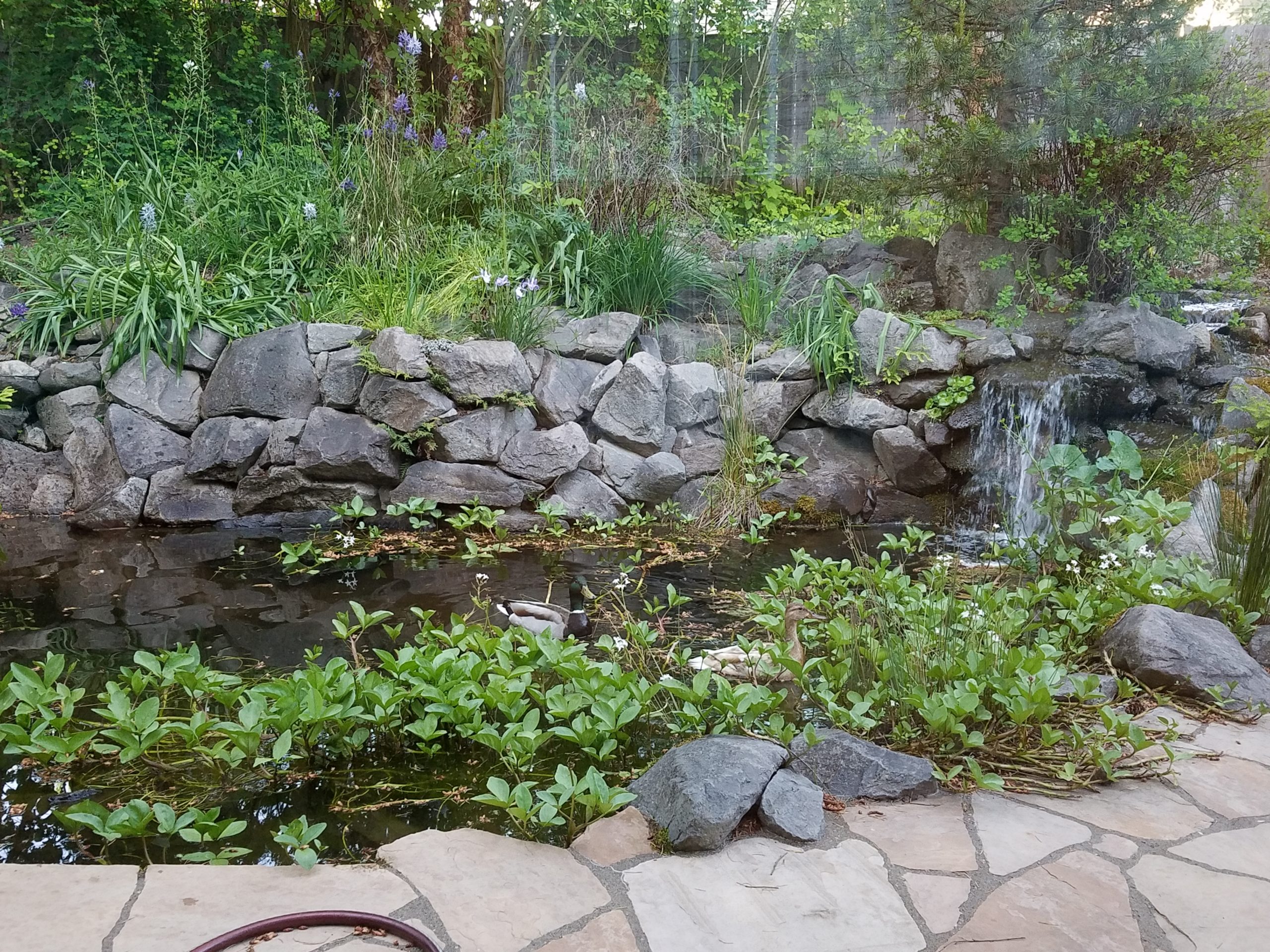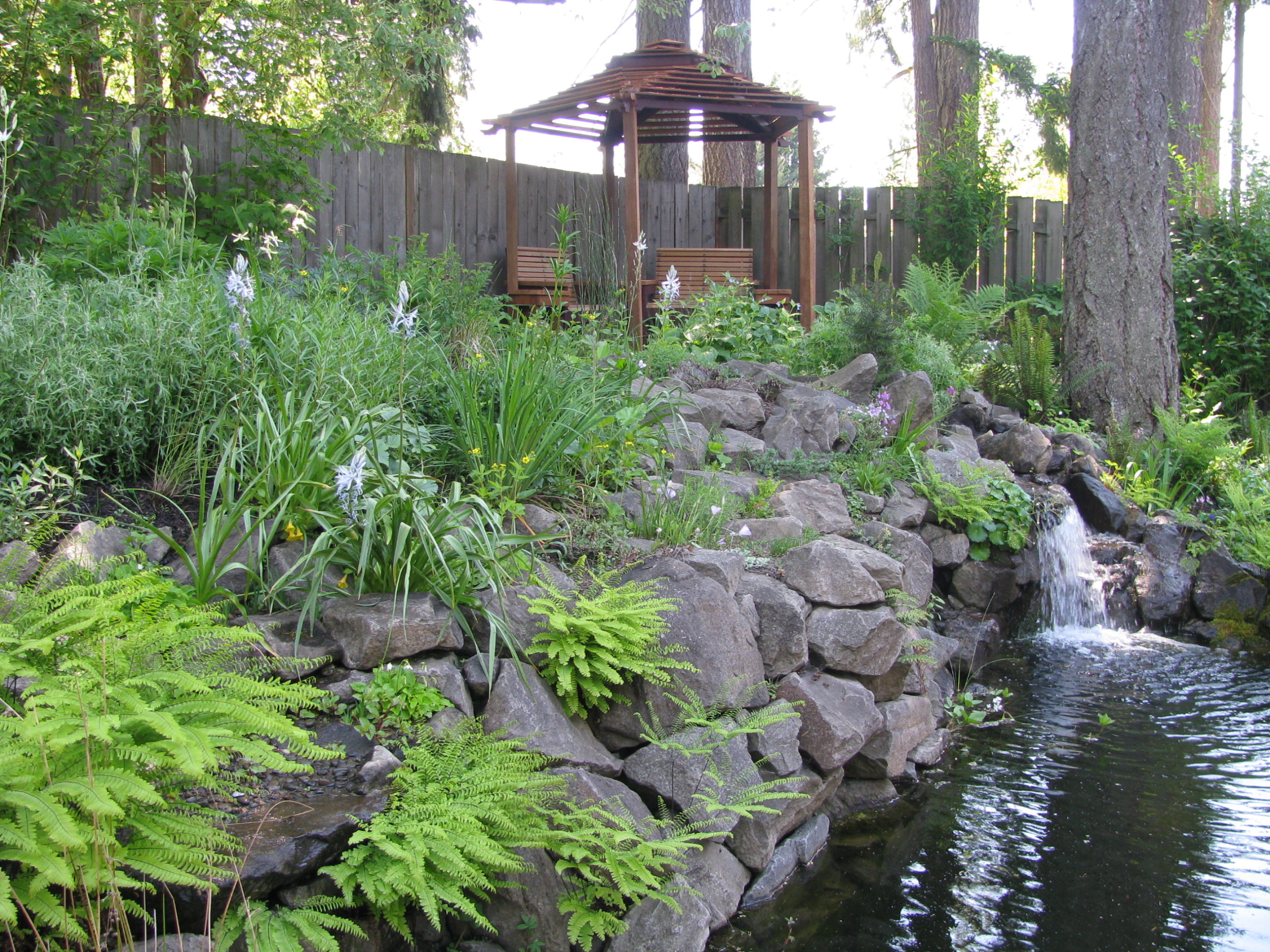Site Information: Located in South Beaverton, Mitch & Carol’s habitat has part sun conditions and includes a pond and water gardens.
What inspired you to enroll in the Backyard Habitat Certification Program?
We have been developing our backyard habitat since 2004. Over a period of four years we built the pond with a stream, waterfall, water gardens, and a bog, and planted many species of native plants. Not all of our plants survived, and some needed to be removed as they proved to be too aggressive. In the past few years we have been replanting some native plants that we had lost, and thinning others that had spread too much. We were thrilled when the Backyard Habitat program came to Beaverton and signed up as soon as we could.
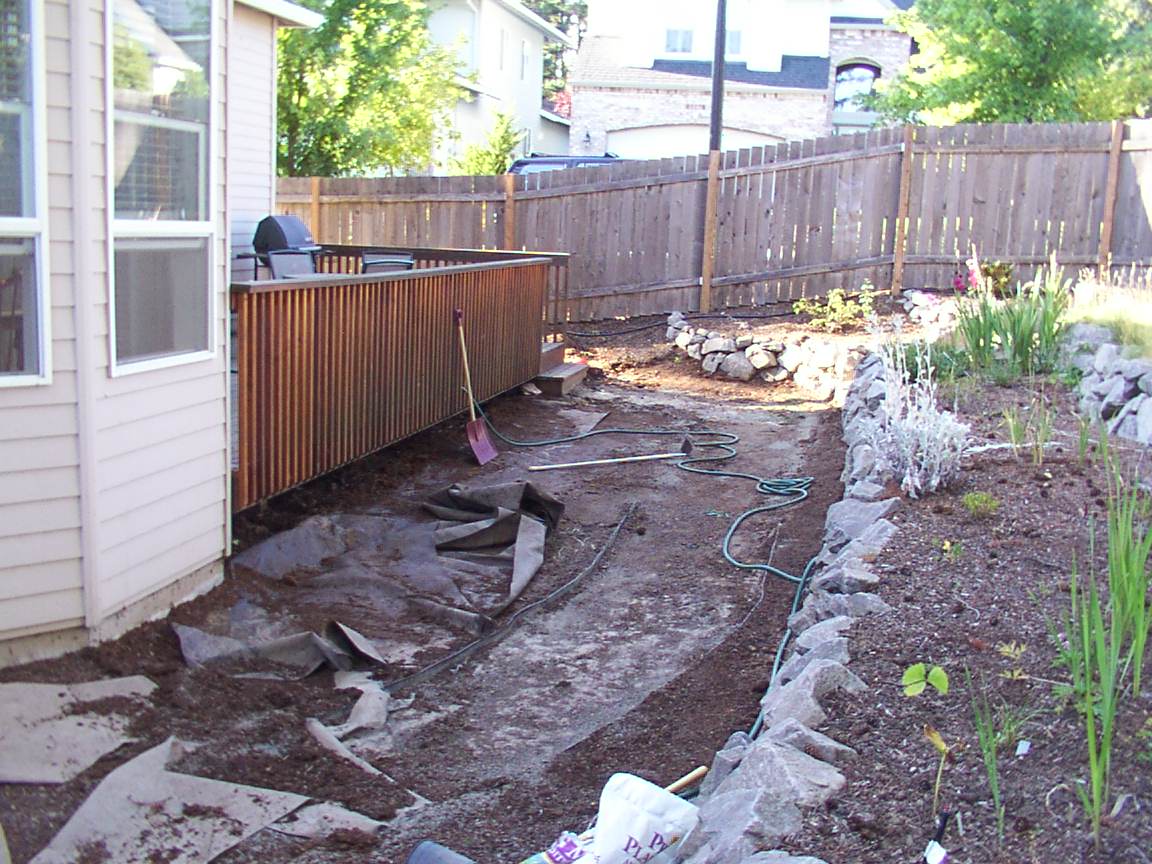
How would you describe your habitat?
We do light irrigation in the gardens, and we try to use only natural remedies except in cases where an invader cannot be easily controlled. When we have to use a herbicide, we apply directly to the leaves with a paper towel instead of spraying. Our streams are favored for bathing by many birds, and our pond is habitat to chorus frogs, water striders, and the occasional northern red-legged frog. We also get occasional visits from mallards, kingfishers and great blue herons, which are attracted by the goldfish.

What changes have you observed as a result of creating habitat?
Since the first day we put water in the pond, we have had chorus frogs. We enjoy hearing them through the spring and early summer. We also have a stable population of water striders, and often see other aquatic insects. The stream and surrounding gardens attract many birds, including spotted towhees, pine siskins, lesser goldfinches, song sparrows, Bewick’s wrens, robins, house finches, black-capped chickadees, chestnut-backed chickadee, bushtits, red-breasted nuthatches, and many others.
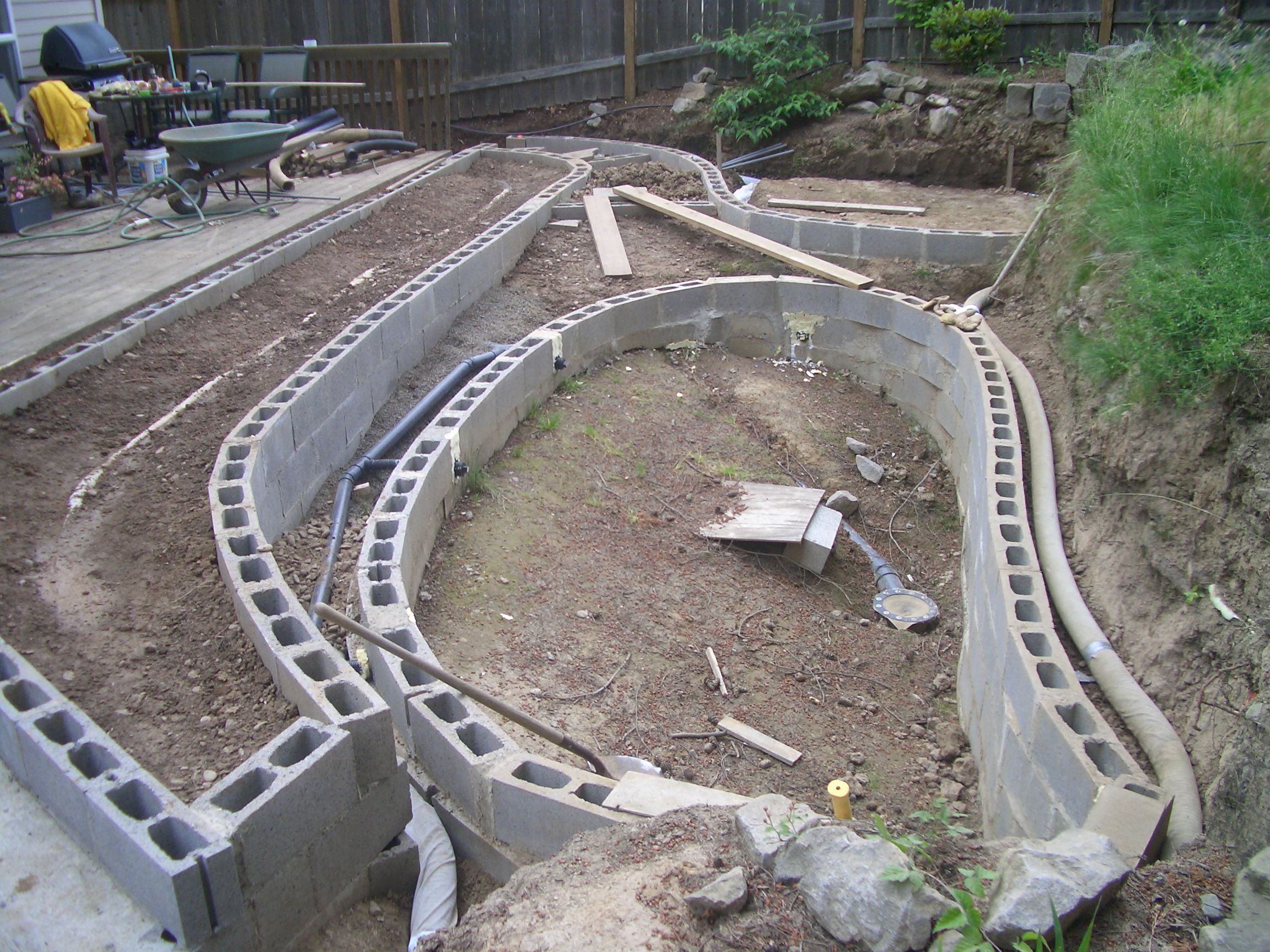
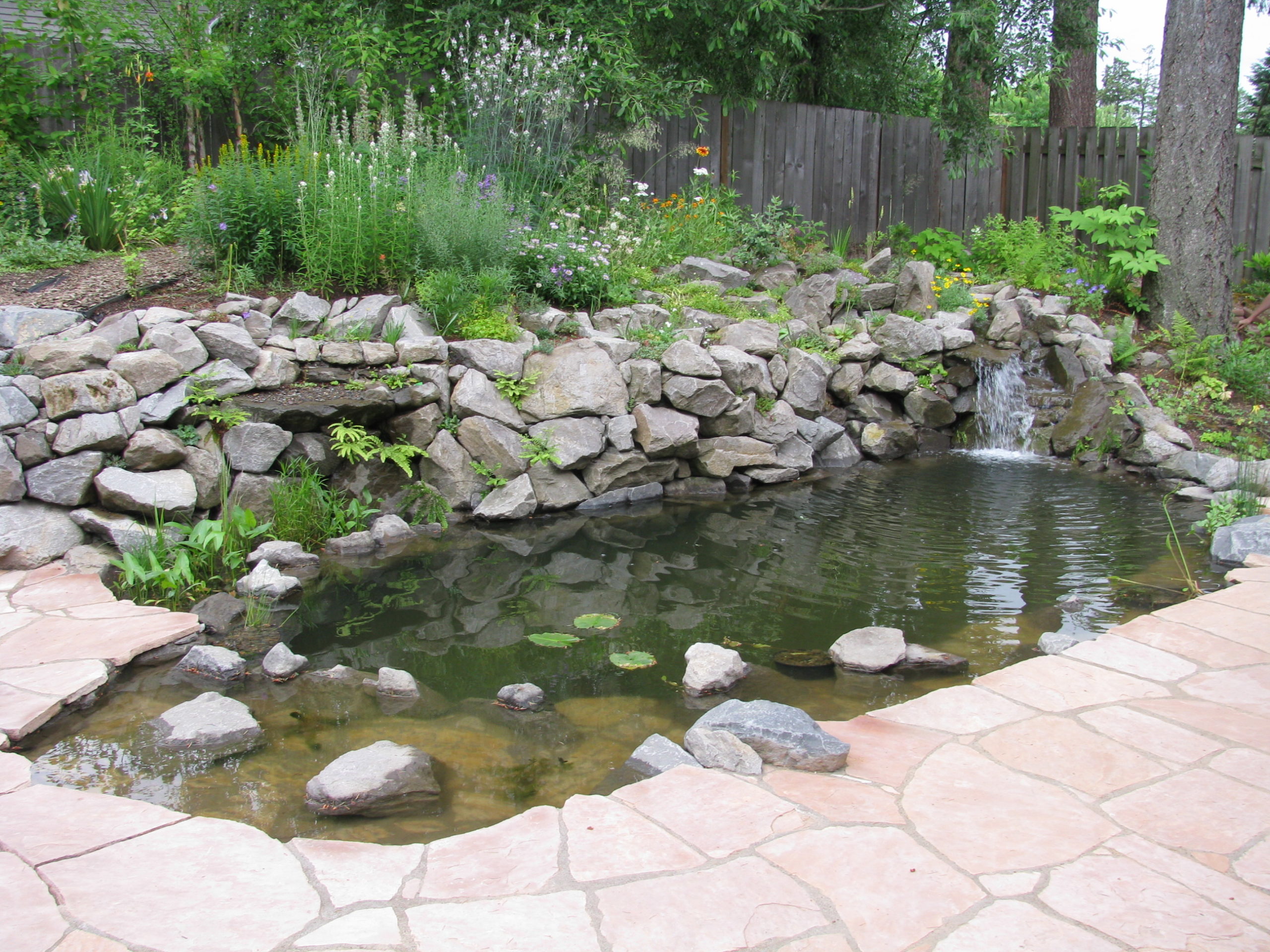
What were the two most significant challenges you encountered while creating habitat, and how did you address them?
The biggest problem we encountered was maintaining species diversity and the removal of some more aggressive natives that we had planted. Some of the more sensitive species are difficult to keep alive, and there are some plants we regret having introduced to our yard.

What resources did you find especially helpful?
We designed and built the pond using web resources. For native plants, we have found a lot of resources on the web, and we consult with experts and native plant nurseries frequently.
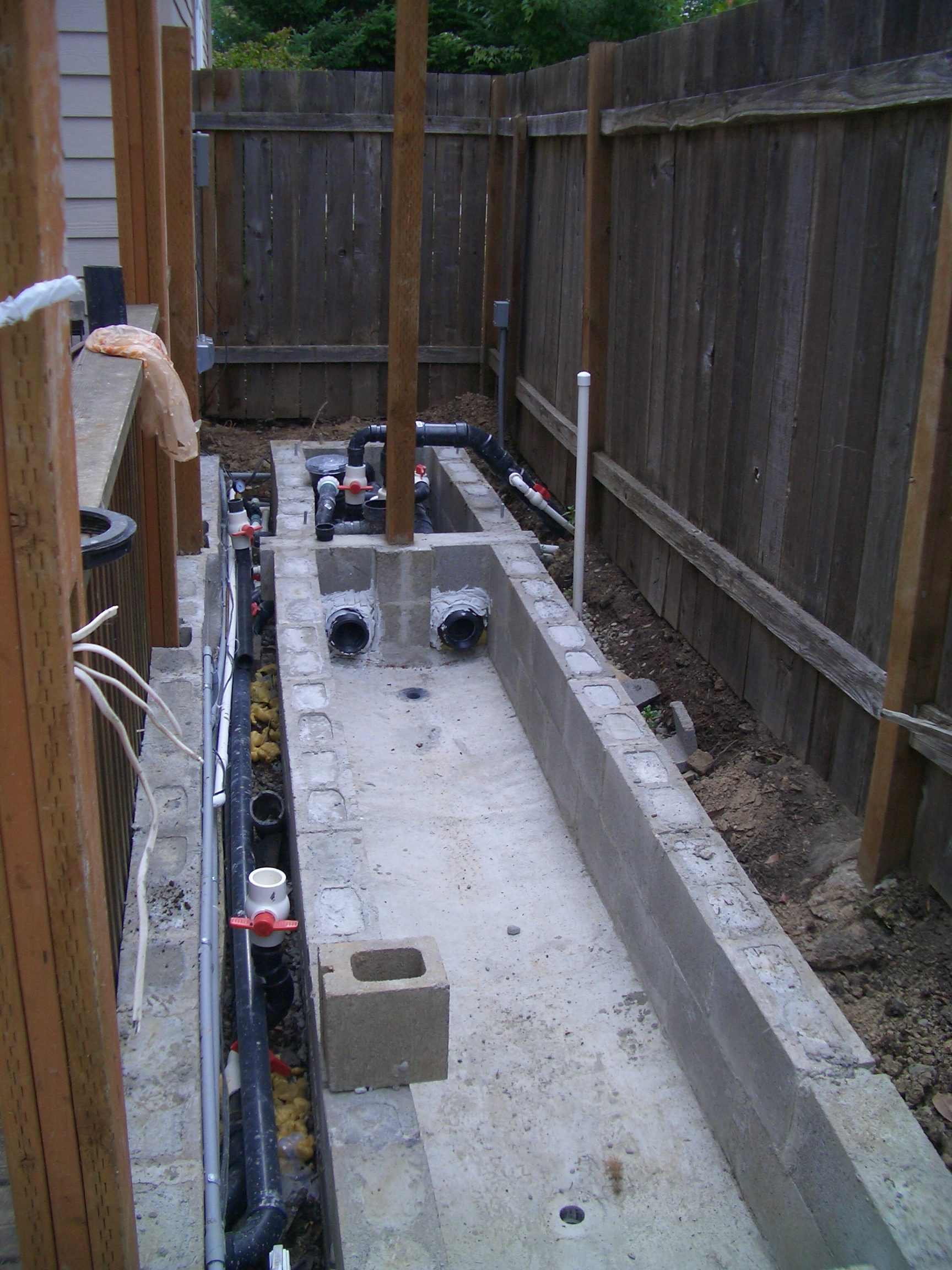
How do you enjoy your Backyard Habitat throughout the different seasons? What are its highlights in each season?
- In the spring it’s listening to the chorus frogs, and watching a progression of species flowering – from early spring with trout lilies, trilliums, bleeding heart, skunk cabbage, etc., to late spring with penstemons, prairie mallow, columbines, cinquefoil, mock orange, ocean spray, etc. This is the time of year we are most likely to get visits from mallards.
- During summer evenings it’s nice to sit on the patio and enjoy the chorus frogs.
- During the fall many plants have nice colors, including the paperbark birch (ornamental tree), dogwoods, and the birch-leaved spirea.
- During the winter we see some birds that are not around in the summer such as varied thrushes and Townsend’s warblers. We often have mixed flocks moving through the yard with thrushes, bushtits, chickadees, and others.
What part of your backyard habitat are you most proud of?
The pond, stream, and water gardens were a major accomplishment, but we generally tried to create a diversity of habitats. We have rock gardens along the top of the rock wall on the side of the pond and on the side of the patio. We have tried to maintain a sunnier meadow with prairie species in the center of the yard where it gets more sun. The water gardens and bog support a diversity of wetland and aquatic species.
Is there anything else you’d like to add about your journey?
It’s a journey that continues as we are always on the lookout for new species to plant. We have enjoyed creating somewhat natural habitats for plants and the animals that are attracted to the yard.

